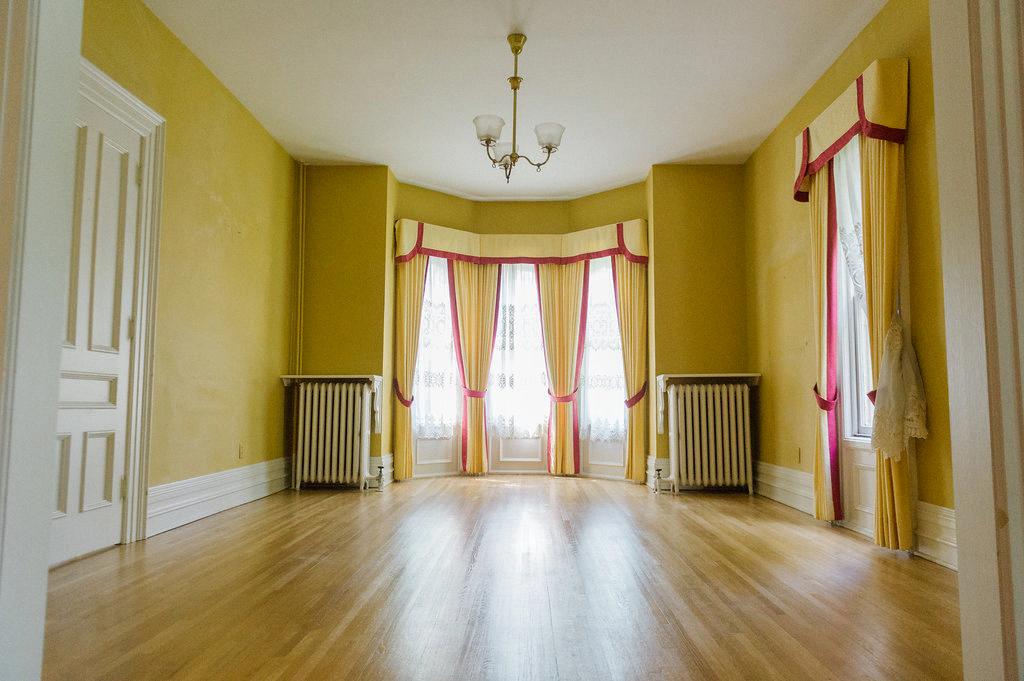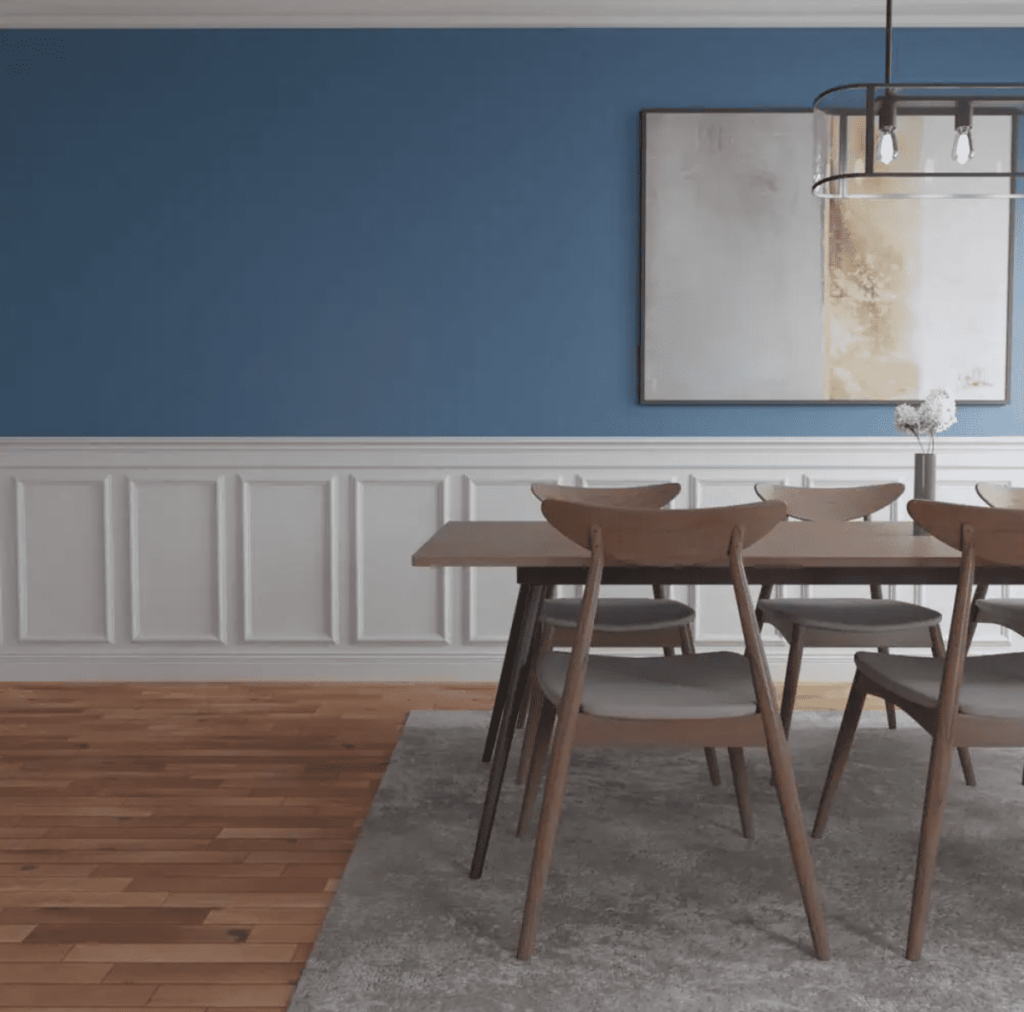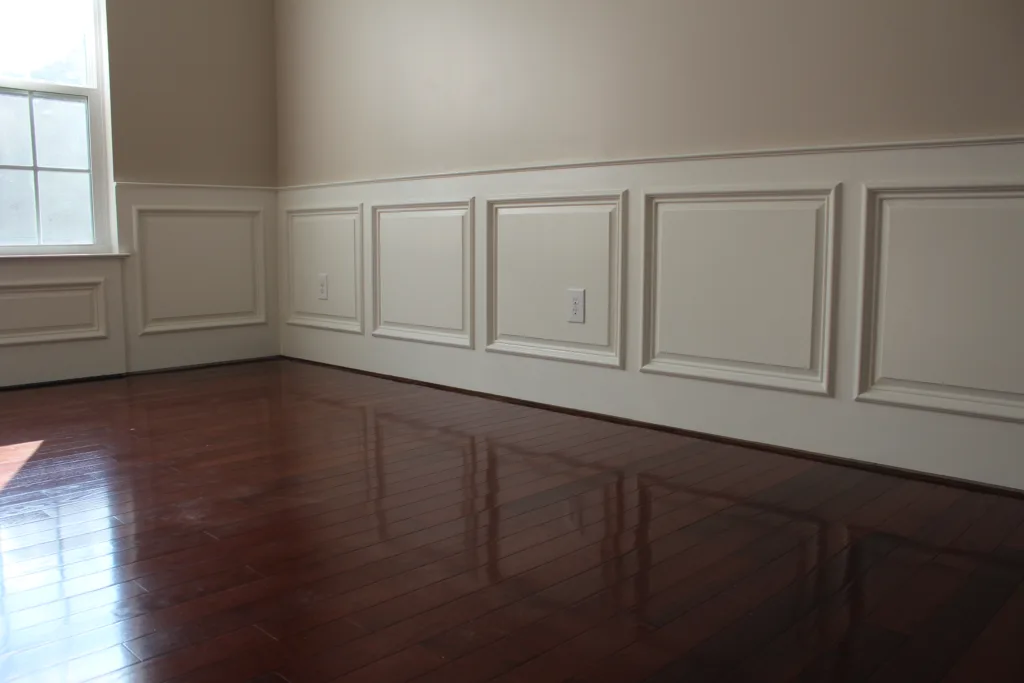Painting wainscoting is a great way to update the look of your walls and add a modern touch to any room. Whether you’re looking for a subtle accent or a bold statement, there are plenty of options when it comes to painting wainscoting.
Before you start, make sure that the surface is clean and free of any dirt or debris. Use a damp cloth with soap and water to wipe the area down, then let it dry completely before applying paint. Once the surface is clean and dry, you’ll need to decide if you want to use a brush or roller for your painting project. A brush can be used for detailed work while rollers provde an even coverage over larger areas.
When selecting paint colors, consider how much contrast you want between the wall and wainscoting. You can choose to paint the wainscoting in the same color as the walls for a subtle effect, or go with a slightly lighter or darker shade if you want more contrast. If your walls are painted in one color but have different shades due to shading variations, opt for a tone that’s in between these two colors for best results.
When painting with either brush or roller, make sure to use light strokes and avoid applying too much pressure so that the paint has time to self-level as it dries. If using a roller, apply it first followed by brushing with an almost dry brush over crevices and grooves so that any globs are whisked away before they have time to dry into visible drips. Finally, give your freshly painted wainscoting some protection by sealing it with an appropriate sealer once the paint has completely dried.
Painting wainscoting is an easy DIY project that can add character and life to any space without breaking your budget! With just some basic supplies and careful preparation, you can give your home an updated look in no time!
Paint Options for Wainscoting
For painting wainscoting, a water-based latex paint is the best choice. Water-based paints are easy to clean up with just water, have little to no odour, and dry quickly. Additionally, they provide a smooth finish and create a durable coating that stands up against wear and tear. For an even smoother finish, you can opt for a low-VOC paint, which has very low levels of volatile organic compounds. If you’re looking for a more durable option, an oil-based paint can be used instead; however, these paints require more time for cleaning up and drying.

Painting Wainscoting: The Best Techniques
The best way to paint wainscoting is to use a two-step process. First, use a roller to evenly apply the paint on the wall and in the crevices. Be sure to roll the paint very lightly so that it doesn’t fill up the crevices too much. Then, quickly follow up with a dry brush to even out thick or thin areas and whisk away any excess paint from the grooves before it has a chance to form drips. This two-step method will help ensure an even finish with no visible drips or uneven areas.
Painting Wainscoting Without Brush Marks
To paint wainscoting without brush marks, you should use a high-quality brush and make sure it is properly loaded with paint. Hold the brush at an angle to the surface and gently swipe it across. Do not apply too much pressure; instead, allow the paint to self-level as it dries. If necessary, use a foam roller to smooth out any imperfections. For best results, apply two or three thin coats of paint rather than one thick coat. Between each coat, lightly sand the surface with fine-grit sandpaper to ensure that the paint does not become bumpy or uneven.
Painting Wainscoting the Same Color as the Wall
Yes, you can paint wainscoting the same color as the wall. This is a great way to create a contemporary look that tones down the traditional feel of the wainscoting. It’s best to choose a color that is a few shades lighter or darker than the walls, or use exactly the same shade to make the molding as subtle as possible. If you’re unsure which color to go with, try testing out some different options on a sample piece of wainscoting before committing to painting your entire wall.
Preparing Wainscoting for Painting: Should Sanding Be Done?
It is not necessary to sand wainscoting before painting, although it is an option. The best way to ensure a good finish is to use a primer that will stick to the existing finish. If the primer adheres properly, then you won’t need to sand the wood. However, if the primer does not stick well, neither will the paint – so it could be worth sanding lightly in this case. In any case, be sure to clean the surface thoroughly before applying a primer or paint.

Source: thelesliestyle.com
Is Wainscotting Still Relevant in Modern Design?
No, wainscoting is not outdated—in fact, it’s anything but. Wainscoting has been around for centuries and is still a popular wall trim option today due to its versatility. Depending on the style you choose, wainscoting can be used to add a touch of elegance to an old-fashioned room, or to create a more modern look in a contemporary space. With so many different types and styles available, there’s sure to be something that suits your taste.
Painting Wainscoting: Brush or Roller?
When painting wainscoting, you should use a combination of both a brush and a roller. Start by using the roller to apply paint to the flat paneling, and then use the brush to get paint into the grooves. This will help to ensure that all surfaces are evenly covered, and that there are no visible drips. Be sure to work quickly with the brush so that any excess paint can be whisked away before it has a chance to dry!
The Impact of Wainscoting on Home Value
No, wainscoting does not increase the value of your home. While it can be aesthetically pleasing and enhance the appearance of your interior walls, it is not an investment that will add significant value to your home. Appraisers do not typically assign additional value to a home based on the presence of wainscoting, as it does not represent a major improvement or renovation. Wainscoting may help with the sale of a home by making it stand out from others on the market, but it won’t lead to a significant increase in its appraised value.
Selecting a Color for Wainscoting
When it comes to picking a color for wainscoting, the best option is to choose a light or neutral shade that complements the room’s overall palette. Neutral colors like white, beige, taupe, gray, and cream can all help make a small space appear larger. Darker colors like navy blue, charcoal gray, and forest green can also create an attractive contrast with lighter walls and draw attention to the wainscoting. In addition to picking the right color, it’s important to pick the right type of paint—an eggshell finish is often best for wainscoting as it has a subtle sheen that helps protect agaist dirt.

Painting Trim or Walls First: Which Should Come First?
When painting a room, it is best to start with the trim before moving on to the walls. The trim should be painted with a high-quality semi-gloss paint in order to protect the wood and give a pleasing shine. Once the trim has dried, you can then tape off the trim and move on to painting the walls. This will help ensure that you don’t accidentally get paint on your freshly painted trim.
Maintaining Cleanliness of Wainscoting
No, wainscoting is not hard to keep clean. With the right cleaning supplies, you can remove dust and dirt from the crevices and textural variations in your wainscoting just as you would with full-paneled walls or wood furniture. Start by uing a damp cloth or microfiber mop to lightly dust the surface of the wainscot. Next, use a mild cleaner such as soap and water or rubbing alcohol on a soft cloth to wipe down the entire surface of the wainscot. You may also want to use a vacuum with a brush attachment to get into any hard-to-reach crevices. Lastly, if needed, apply a furniture polish made for wood surfaces to add shine and protect the wood. With these simple steps, you can easily keep your wainscoting looking its best.
Making Wainscoting Look Modern
Making wainscoting look modern is a great way to update the look of any room. To achieve a modern look, try using paint with a gloss finish in bold colors to create contrast. Additionally, combining traditional wainscoting with modern wallpaper can provide an interesting visual effect. Additionally, pairing old and new materials can add an element of surprise and interest to the design. For a more contemporary look, use quirky or playful decor items to create contrast. Finally, using all-contemporary design elements can also help to bring a modern touch to your wainscoting.
Should I Paint Wainscoting or the Wall?
When it comes to painting wainscoting or wall, it really comes down to personal preference. If you want a uniform look, it’s best to paint the wall first and then the wainscoting. That way any stray drips or spatters that end up on the wall can be easily feathered out, rather than needing to be removed. However, if you’re looking for a two-tone effect, painting the wainscoting first may be the better option since you won’t have to worry about painting aound the edges of each panel. Ultimately, choosing whether to paint the wall or wainscoting first will depend on your desired aesthetic outcome as well as how much time and effort you’re willing to put into achieving it.

Should Semi-Gloss Paint Be Used for Wainscoting?
In general, it is recommended to use a semi-gloss paint sheen for wainscoting. Semi-gloss provides more durability than a flat or matte finish and still hides minor imperfections. However, you may want to go with a glossier sheen if you have a high traffic area where the wainscoting will be exposed to more wear and tear. Ultimately, the best option for your particular situation will depend on your specific needs.
Conclusion
In conclusion, painting wainscoting can be a great way to add a modern touch to your home. The best type of paint to use for this project is water-based acrylic/latex paint, as it cleans up easily and dries quickly. When applying the paint, use a roller to get paint into the crevices, then quickly follow up with a mosty dry brush to even out thick or thin areas and whisk away any globs before they dry into visible drips. For an even more subtle look, choose a color that’s only slightly lighter or darker than the walls, or use the exact same shade as the walls. With these tips in mind, you should have no problem creating beautiful wainscoting that adds character and style to your home.
